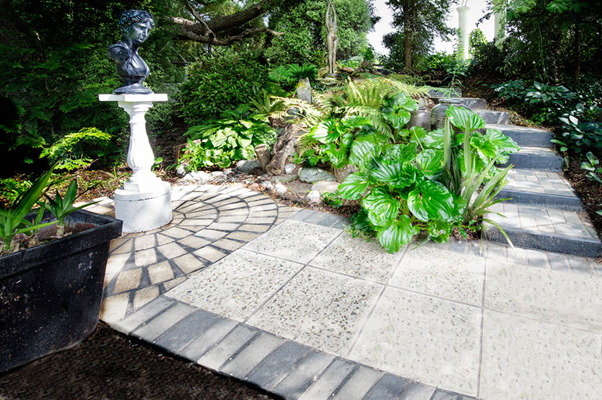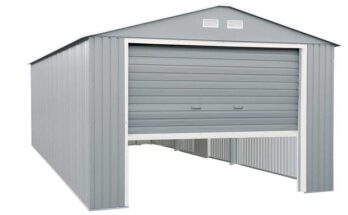In an era where environmental consciousness is paramount, the choice of landscaping materials plays a pivotal role in promoting sustainability. Laying pavers offer not only aesthetic appeal but also a sustainable solution for outdoor spaces. Let’s delve into the realm of eco-friendly pavers, exploring their environmental benefits and showcasing Dragonstone Paving’s commitment to sustainable landscaping.
The Environmental Imperative
Landscaping materials significantly impact our environment. Traditional materials, often derived from resource-intensive processes, contribute to depletion and pollution. However, the emergence of pavers signifies a paradigm shift. These pavers, made from recycled materials or sustainably sourced resources, reduce waste and minimize environmental harm.
Understanding the Advantages of Pavers
They represent more than just a green alternative; they encapsulate durability, longevity, and aesthetic appeal comparable to conventional materials. Additionally, these pavers exhibit superior performance, showcasing resistance against weathering, erosion, and UV degradation, while contributing to a sustainable landscape.
Sustainable Landscaping Design with Pavers
Explore design ideas and landscaping techniques that integrate environment friendly pavers. Discuss how the range of eco-conscious products can be utilized to create stunning yet environmentally responsible hardscapes, including pathways, driveways, and patios, all contributing to landscaping designs.
Exploring Dragonstone Paving’s Range
Enter Dragonstone Paving, a champion in providing eco-conscious pavers. Their diverse array of environmentally responsible options showcases innovation and sustainability. Materials crafted from recycled plastics, reclaimed aggregates, and natural stone form the backbone of Dragonstone Paving’s commitment to landscaping solutions.
Permeable Pavers: A Sustainable Innovation
Delve into the concept of permeable pavers, a revolutionary addition to sustainable landscaping. These pavers facilitate rainwater infiltration, mitigating stormwater issues, preventing runoff, and aiding groundwater recharge.
Maintenance as a Key Aspect of Sustainability
Emphasize the role of proper maintenance in upholding the longevity and allure of pavers. Encourage the use of environmentally friendly cleaning solutions and techniques aligned with sustainable practices, ensuring the continued functionality and visual appeal of these eco-conscious landscaping materials.
Empowering Sustainable Choices
Empower readers with actionable insights. Provide guidance on selecting pavers, understanding certifications, and advocating for environmentally responsible practices. Encourage conscientious decision-making in landscaping projects, urging individuals to embrace eco-friendly solutions for a more sustainable tomorrow.
Process of Laying Pavers
It is an artful process that transforms outdoor spaces, offering both functionality and aesthetic appeal. Whether it’s designing a charming walkway, a stunning patio, or a durable driveway, the meticulous task of laying pavers demands attention to detail and proper technique.
Planning and Preparation
The first step in laying pavers involves meticulous planning and preparation. Begin by envisioning the desired layout and design of the area. Consider factors such as the purpose of the space, the type of pavers to be used, and the overall aesthetic you wish to achieve. Proper planning ensures a smoother execution of the project.
Next comes the crucial stage of groundwork preparation. Clear the designated area, removing any debris, vegetation, or existing paving materials. Excavate the soil to a suitable depth, allowing enough space for the base materials and the pavers themselves. Proper grading of the area ensures adequate drainage, preventing water accumulation.
Laying Base Materials and Pavers
Once the area is properly excavated and leveled, it’s time to lay the base materials. These typically include a layer of gravel followed by a layer of sand. Each layer should be carefully spread and compacted to create a stable foundation for the pavers. Using a compactor ensures a firm base that minimizes shifting or settling of the pavers over time.
With the groundwork laid, it’s time to begin placing the pavers. Starting from one corner or edge, carefully lay the pavers according to the predetermined pattern or design. Use a rubber mallet to gently tap each paver into place, ensuring they are level and snugly fit together without gaps.
Proper maintenance is key to preserving the beauty and functionality of the paved area. Regular cleaning, occasional resealing, and addressing any issues promptly can extend the lifespan of the pavers and keep the surface looking pristine for years to come.
Conclusion: Paving a Sustainable Tomorrow
In conclusion, the embrace of eco-friendly pavers represents a significant stride towards sustainability in landscaping practices. Dragonstone Paving’s commitment to offering eco-conscious solutions reflects an industry-wide shift towards more environmentally responsible practices. By laying pavers, individuals not only craft visually captivating outdoor spaces but also make substantial contributions to minimizing their ecological footprint. Let’s unite in paving the path to a greener tomorrow, one environment friendly paver at a time.




